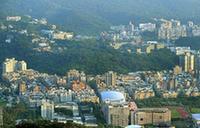Time-travel to Taiwan
 |
|
The Miaokou Night Market in Keelung is bustling with diners. [Photo by Zhao Jun / for China Daily] |
For a mainlander like Raymond Zhou, Taiwan does not appear ultramodern, but its richness in tradition has a charm that outsiders find hard to resist, he discovers.
My first trip to Taiwan, which took place last month, was with a team of professional photographers. They were more interested in the people inhabiting this treasure of an island, than the tourist attractions it has to offer. And it made a world of difference because it clicked with my intuitive finding that the most wonderful thing about Taiwan is its people.
|
 |
 |
It is difficult to claim to know a place and its people in a tour of one week. So I depended on my teammates for corroboration. He Yanguang, a veteran photographer with China Youth Daily, was embarking on his fourth tour of Taiwan. He first visited it in 1997. "There's not much difference," he said, "not even in the facade."
And that lack of change could well be the most valuable lesson we carried away from this journey.
Sure, there is Taipei 101, the tallest building in the world when it opened in 2004 until the title was snatched away by the Burj Khalifa in Dubai in 2010. It's certainly sky-piercing or a crane among a clutch of chicks, to borrow the Chinese term, as Taipei does not have a dense cluster of skyscrapers as Hong Kong does.
When I examined it closely, Taipei 101 seems an oversized Chinese pendant, with coins on all four sides. All the symbols of money would take some explaining when the world enters an all digital era when cash may sound extremely quaint to future visitors.
But worry not. Right now, Taipei is a paradise to those who want a taste of the old way. Here, gourmet could mean snacks and street stands, which attract hordes of diners including the middle class and chic youth. This is subversive to my thinking because in the mainland a restaurant could easily have dozens or hundreds of tables in a mammoth hall or flanks of private rooms, often with lavish decorations.
In Taiwan, we were taken to every lunch in restaurants with no more than 10 tables. The service is efficient and the place is clean, but the taste of the food is so memorable we instantly understand why so many are waiting for a seat. I had the best beef noodle I could remember.
I was told that all of these businesses are operated by families and most have a history that goes back half a century or more. And I noticed there are many businesses of this size in Taipei, either downtown or in the suburbs, and they contribute to the feeling of a community. I left Taipei with a strong sense that, though it's a city with a population of almost seven million in the metropolitan area (with 2.6 million in the city proper), it has a touch of intimacy as if it's still a village - only endlessly enlarged. People talk to each other in a way they talk to fellow villagers.
We visited many old streets and night markets, which are unadorned and crowded. Vendors hawk their offerings and bakers ask you to have a taste of their fresh pastry, but they never give you any pressure to buy or give you the nasty look after you tasted something but decided against buying it. There is a friendliness in their voice and their manner that is more neighborly than businesslike.














